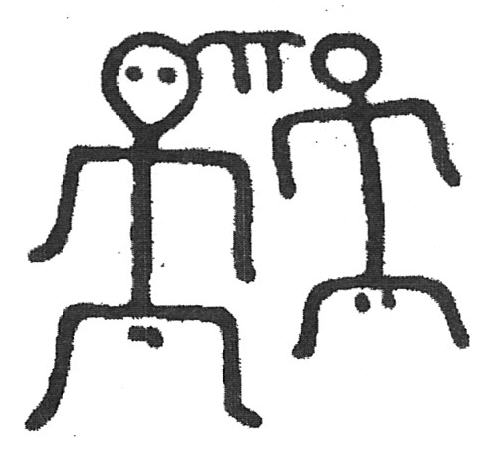
AIKANE
Traditional Hawaiian Same-Sex Relationships

Polena pa'a 'ia iho ke aloha i kuleana like ai kaua.
(In love tightly bound, you and I share equal rights.)
Same-sex relationships are an important part of our most traditional Hawaiian culture. The 'ohana or extended family often included same-sex relationships.
The special word for the people in these relationships was AIKANE, but the Hawaiians used other words such as ho'okamaka and lawakua.
Captain Cook and his crews first noticed this when they met some of the aikane of the chiefs on Kaua'i, Maui, and the Big Island. In fact, some of the Hawaiians asked the sailors to become their aikane!
Most of the ruling chiefs, including Kamehameha the Great, had several aikane in their households. Sometimes children were raised specifically to enter the royal household and become the aikane of the chief.
Legend tells us that this was the custom back to the beginning, including the household of the first parents, Wakea and Papa.
In the story of the great chief Lonoikamakahiki, a commoner from Kaua'i, Kapa'ihiahilina, became his aikane, after telling him "Aloha au ia 'oe, ukali mai nei." I love you, so I followed you here. Some of the best women's stories are found in the legend of Pele and her sister, Hi'iaka.
The saying was, He aikane, he punana na ke onaona. An aikane is haven made of loveliness.
From these traditions and legends come many of the chants and dances that are part of hula, and as Kalakaua said, the hula is the lifeblood of the Hawaiian culture.
Even after the revolution and the overthrow of Queen Lili'uokalani, our law and our state constitution have always required that lawmakers take into account Hawaiian language, customs, and usages.
Many of the nationalities that have come to Hawai'i also have ancient traditions recognizing same-sex relationships; for example, the Chinese, the Japanese, and the Filipinos.
This means that same-sex relationships are, and ought to be, part of our society and part of our definition of "family".
Many local families include someone who is gay or lesbian: a brother, sister, cousin, aunty, uncle. Sometimes it's hard for that person to "come out" to his or her family, and sometimes it's hard for the family to talk about that person's sexuality.
But NO SHAME, no hilahila. All this was part of the strength and love of the Hawaiian tradition.
Dignity
Hanohano
Pride
Ha'aheo
Love/Devotion
Aloha
References
Lilikala Kame'eleihiwa, Native Land and Foreign Desires, Pehea La E Pono Ai? Honolulu: Bishop Museum Press, 1992, pp. 116, 145, 180, 191-2, 263-4, 266, 274, 276, 284, 365n.6, 379, 388.
Jocelyn Linnekin, Sacred Queens and Women of Consequence: Rank, Gender, & Colonialism in the Hawaiian Islands. Ann Arbor: University of Michigan Press, 1990, pp. 99-100, 148, 163.
Robert J. Morris, "Aikane: Accounts of Hawaiian Same-Sex Relationships in the Journals of Captain Cook's Third Voyage (1776-80)." Journal of Homosexuality 19(4) 1990:21-54.
Robert J. Morris, "Same-Sex Friendships in Hawaiian Lore: Constructing the Canon." Stephen O. Murray, ed. Oceanic Homosexualities. New York: Garland Publishing, 1992. pp. 71-102.
Curt Sanburn, " 'Men of the First Consequence' The Aikane Tradition: Homosexuality in Old Hawaii." Honolulu Weekly 3(19) May 12, 1993:4-6.
Elspeth P. Sterling and Catherine C. Summers, Sites of O'ahu. Honolulu: Bishop Museum Press, 1978, p. 338.